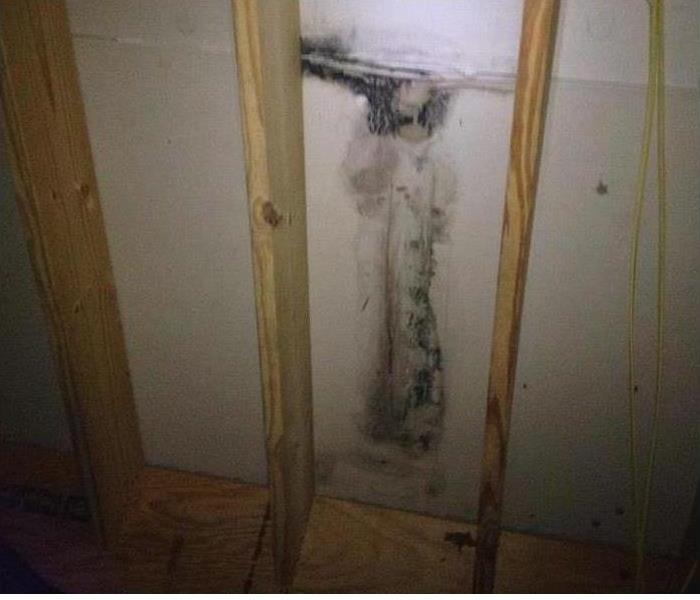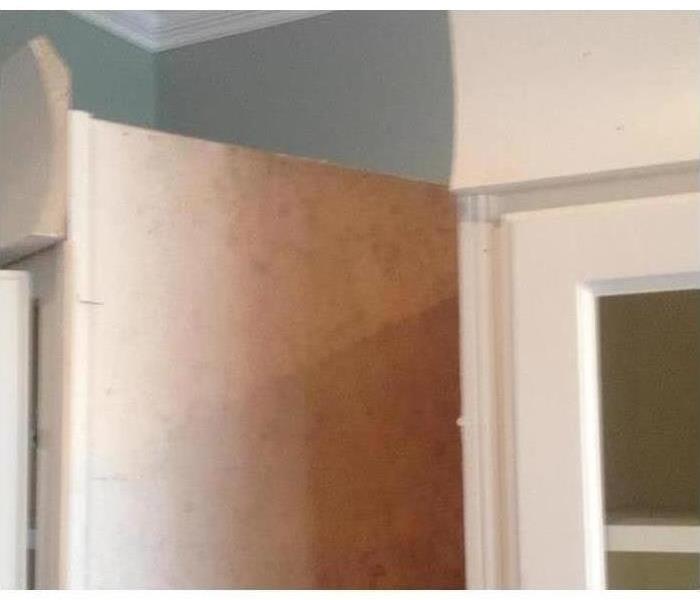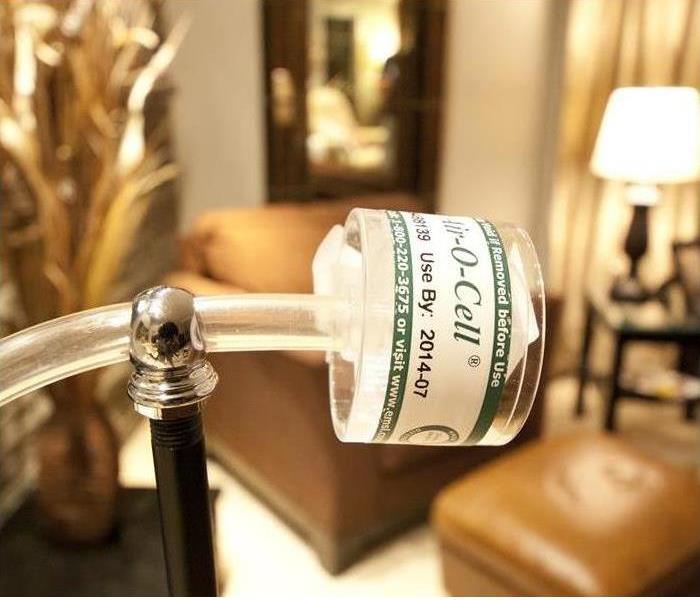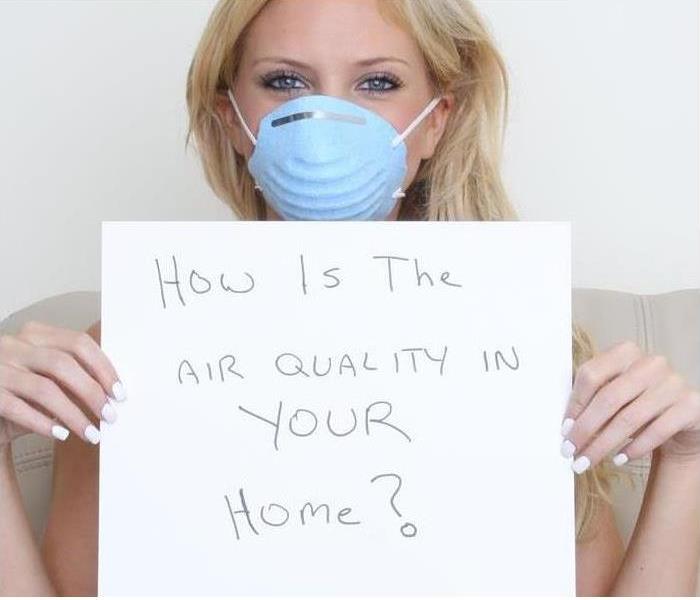Archived Mold Remediation Blog Posts
Understanding Mold Growth and Mold Remediation
4/29/2022 (Permalink)
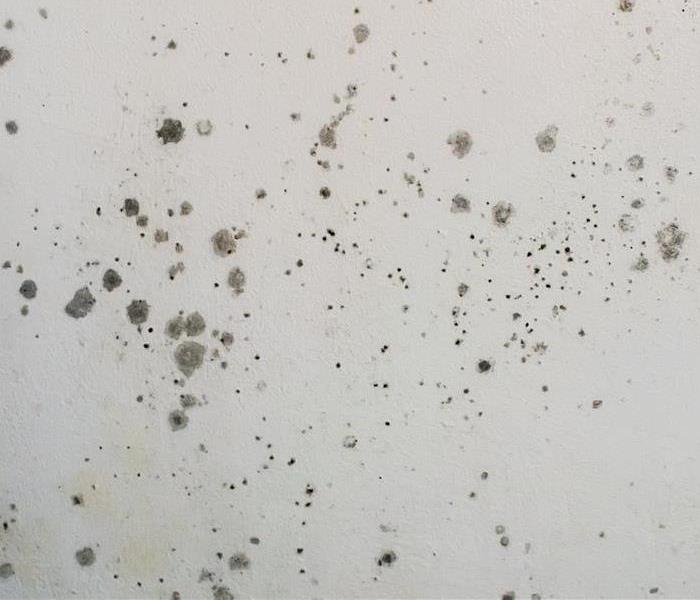 How does mold grow in Prince George’s County?
How does mold grow in Prince George’s County?
Why SERVPRO of College Park/Hyattsville and SERVPRO of District Heights/Landover?
Mold is a hazardous problem indoors. If you have mold growth issues in your home, you need to remediate the issue as soon as possible. There are serious concerns related to mold being present in your home, business, or commercial building. Read more to learn how our certified professionals can help you with your mold issues.
Understanding Mold
- Mold is present both indoors & outdoors, and it is present almost everywhere.
- Mold spores are microscopic and float along in the air and may enter your home through doors, windows, AC/heating systems, or on your clothing and pets.
- Mold spores love moisture. Mold spores can quickly grow into colonies when exposed to water. These colonies may produce allergens and irritation.
- Before mold remediation can begin, any sources of water and moisture must be addressed. Otherwise, the mold may return.
- Mold often produces a strong, musty odor and can lead you to possible mold problem areas.
- Mold thrives in higher-than-normal humidity. Remember to keep indoor humidity below 45%.
Why SERVPRO?
- We are available 24 hours a day, seven days a week
- Our certified professionals are faster to any size disaster
- Our certified professionals are highly trained mold remediation specialists
- We use advanced mold remediation techniques and equipment
Call SERVPRO of College Park/Hyattsville and SERVPRO of District Heights/Landover
When you have water and mold issues, we are nearby and ready to help. If mold is visible, our certified technicians can inspect and assess your property to determine a plan of action. SERVPRO of College Park/Hyattsville and SERVPRO of District Heights/Landover is locally owned & operated. We are proud to serve our local communities. Call us at 301-779-3662 or 301-577-1166.
8 Bad "Facts" ABout Mold Everyone Thinks Are Tru
10/2/2018 (Permalink)
Mold Monster8 Bad “Facts” About Mold That Everyone Thinks Are True
With all the misinformation about mold out there it is easy to over react. Here are four “facts” that are over reactions to mold.
Bad “Fact” 1: All Mold Is Bad
Nope! Have you ever eaten blue cheese or take penicillin? Mold is used in the making this kind of cheese and medicine.
Bad “Fact” 2: All Mold Causes Health Problems
In reality, the effect of mold on people varies greatly. Molds produce allergens, and while some people will be allergic to the allergens produced by mold not everyone will react to mold, and the effects can be varied depending on ones’ sensitivity to mold
People who are highly sensitive to mold may develop allergic reactions and show symptoms such as difficulty breathing, bloody noses, itchy and watery eyes, etc. People with already compromised immune symptoms are also at risk for reacting to mold, and some studies have suggested that serious health effects can arise from repeated exposure to mold, so it is not something to play around with.
Bad “Fact” 3: There Should be No Mold Inside
In reality mold is all around us and is very natural. There are mold spores in the air you are breathing and there is really no way around this unless you decide to live inside a plastic, environmentally controlled bubble. The problem is not that there is mold indoors the problem is with the concentration of mold indoors. Mold should not be growing in your walls or on surfaces as that can be a problem and contribute to allergic reactions.
We will always live with mold, the question is how much mold should we live with? The answer to that is still being worked out. As mold affects people differently you should talk to your doctor if you think you are suffering from exposure to mold and you take steps to reduce your exposure to mold..
Bad “Fact” 4: Bleach Kills Mold
This is kind of a half truth. Bleach may kill certain kinds of mold on non-porous surfaces, however, it is not clear that bleach can kill all kinds of mold nor kill mold on porous surfaces such as wood. Research is continuing to be done on the effectiveness of bleach as a mold cleanup agent. It should be noted that using bleach to “kill” mold poses its own health risks and is not a recommended solution by EPA or OSHA. Bleach is also very corrosive and can cause further damage if not used correctly.
Bad “Fact” 5: Killing Mold is Enough, I Don’t Need to Remove it
Killing mold is not enough. Putting aside the conflicting reports on what kills mold, simply killing mold does not remove the health effects as the allergens are still present even in dead mold. To properly protect against health effects, removal of the affected areas is often necessary. Care must be taken when removing the affected areas so that the allergens and mold is not spread throughout the house. That is why professional mold remediation services are often necessary to properly fix a mold problem.
Bad “Fact” 6: Mold is Natural, You Shouldn’t Worry About it
While mold may be natural, consistent exposure to mold can have negative affects on ones health. If mold is growing in your home or place of business it needs to be addressed as it will deteriorate your building and can cause health problems.
Bad “Fact” 7: If You Only See a Little Mold it is Probably Nothing to Worry About
If mold is to the point where it is visibly growing on surfaces in your home you have a problem. Mold is like an iceberg, you generally only see the tip of it while the majority is below the surface. If you see a little bit of mold you most likely have more growing under the surface out of site.
Bad “Fact” 8: Cleaning up Mold isn’t Hard. You Should Do it Yourself
This is another half truth. While you may be able to clean up certain kinds of mold in small quantities most people are not equipped to do proper mold remediation. Simply wiping down the evidence is not good enough. To properly “cleanup” a mold problem you must identify the cause, isolate the area to keep the mold from spreading, and clean and or remove the affected surfaces. Unless you know how to setup a containment unit, have a couple of commercial sized HEPA air filtration units, protective gear, HEPA vacuums, specialized cleaning agents, and can do a wet extraction to keep mold spores from spreading.
I found you!
9/18/2018 (Permalink)
Many people may already know the most common places for mold :
Basements or cellars that have been flooded , underneath kitchen and bathroom sinks, underneath or behind refrigerators, behind walls that also house plumbing, under carpeting that may have become wet, stacks of damp or wet newspaper or cardboard boxes, wallboard , and around air-conditioning units.
But I want to tell you some uncommon places to look.
Chimneys, front-loading washing machines, window sashes and seals, dishes ( yep, if you don't dry them well and stack them up ), books ( that old book smell can really be the smell of mold).
Try to stay ahead of the hiding game with Mold, take a monthly check around the house. In this game it's better not to find the mold to win
Is it an allergy to pollen or mold?
9/18/2018 (Permalink)
I'm sure if you were asked the question, "can you have an allergy to mold?", your answer would more than likely be , "sure".
But if asked what the symptoms are then you might not be so quick to answer. Here's the thing, the symptoms of mold allergies are so similar to plant and animal allergies that you might get them confused.
Typical allergy symptoms are sneezing, itching, runny nose, congestion, dry and scaling skin. All of these same symptoms are associated with mold allergy as well.
Mold and mildew are fungi. The spores are the "seeds" of mold that travel through the air. These spores are what we inhale and have a reaction to. These spores can also get into our lungs and trigger asthma.
So if you think your allergies aren't going away, even when you've tried medicines and stayed in doors. It might not be the allergy that you think you have.
When in doubt have SERVPRO check you home for Mold. We are here to help.
Air Quality
8/27/2018 (Permalink)
Here are some things to consider from the American Lung Association about air quality in your home:
Is anyone smoking indoors? No one should smoke indoors.
Can you see or smell mold or mildew?
Is the humidity regularly above 50 percent?
Are there leaks or standing water anywhere—kitchen, basement, attic?
Are all fuel-burning appliances (gas stoves, water heaters, fireplaces) fully vented to the outdoors?
Is there an attached garage or basement where cars, lawnmowers or motorcycles are stored?
Are household chemicals, paints or solvents stored indoors or in an attached garage or basement?
Have you recently remodeled or added new furniture, carpeting or painted?
Do you use odor-masking chemicals or "air-freshening" devices?
Has kitchen or food garbage been covered and removed?
Have you used pesticides recently?
If you have an ongoing air quality issue, call SERVPRO of College Park/Hyattsvile for further consultation. We have a staff of professionals, certified in all aspects of deodorization and microbial remediation.
Removing Mold from your Bathroom
8/27/2018 (Permalink)
Your bathroom is the number one room in residential and commercial buildings susceptible to mold growth. Mold can be found indoors and outdoors, however, it is more dangerous to people's health when found indoors. At the first sign of mold's toxic fungus, action needs to be taken to help prevent the rapid spread of mold spores.
Bathroom Ventilation and Moisture
Bathrooms develop a great deal of moisture from showers, baths, and the humidity in the air. This is what causes mold spores to grow. Without proper ventilation, the wet areas of the bathroom do not dry properly leaving a perfect opportunity for mold spores to colonize and spread throughout the room.
Flood Damage and Mold Growth in Bathrooms
Bathrooms, much like kitchens, are prone to floods and water damage in both residential and commercial property. It takes only 48 hours for an untreated area exposed to excess moisture to develop colonized mold spores. Mold can damage residential and commercial property, but it is more detrimental to commercial property because it can cause a business to have to close down for repairs. Interrupting the flow of business can cost more than the necessary mold remediation to remedy the problem.
Mold Removal Products
Mold is hazardous to the inhabitants of any residential or commercial property. Remedying the issue is not as simple as one would like it to be. The Institute of Inspection Cleaning, Restoration Certification (IICRC), and the Environmental Protection Agency (EPA) suggest mold in an excess of three square feet should be remediated by a licensed and certified mold remediation firm immediately at the onset of mold spore growth. Certified firms are recommended because they are more likely to follow the IICRC S520 guidelines for mold remediation. The IICRC S520 guidelines were designed to protect the technicians performing the mitigation and the property's inhabitants.
A bathroom with a mold outbreak is likely to have a reoccurrence even after remediation. The best way to prevent this from happening is to address the moisture issue before hiring a remediation expert to treat the infected space. Without addressing the overall moisture issue, mold will continue to reappear and cost you a great deal of money in damages.
There are many companies with the ability to remediate your bathroom space; however, SERVPRO is one of the leading remediation experts in the country. They have a reputation for providing great customer service. If you have any additional questions about mold and how to treat it, you can consult with SERVPRO. They will give you all the information you require.
Mold Testing
8/27/2018 (Permalink)
In this day and age, you can order any testing online. But mold testing isn't something we recommend that you purchase online and start collecting a sample because of the cost and the incorrect readings which can lead to the potential for more growth of mold which is a danger to you and your family health. Let the professional of SERVPRO assist you any mold testing and mold removal. Testing for mold is essential especially after a flood or leak due to a natural disaster or leak within the structure. We want to ensure that your safety and your health is protected when it comes to mold issues so always reconsider hiring a professional when you want to test for mold in your home and business.
Areas in your house that mold can hide from you
10/3/2017 (Permalink)
9/6/2016
Mold can occur anywhere in a home but mainly is concentrated to areas where moisture is present. These moisture areas are common to the bathroom and basements. Mold can cause respiratory problems and should be removed if found as soon as possible. Most restoration companies only do mold inspections if the mold is visible, an industrial hygienist would come in and search for traces of mold that are not visible.
One of the first places mold can collect and you may not think to check is under the refrigerator. Under the fridge tends to collect moisture and dirt which can cause a breeding ground for bacteria and mold.
Another place is the AC unit. AC units are known to collect debris, dust and moisture from the air, which can lead to mold spores.
Mold can even grow in or around a washing machine or its parts. Moisture and lint can cause a presence of mold spores.
Other area in the house include anywhere moisture and dirt may form such as window corners.




 24/7 Emergency Service
24/7 Emergency Service

